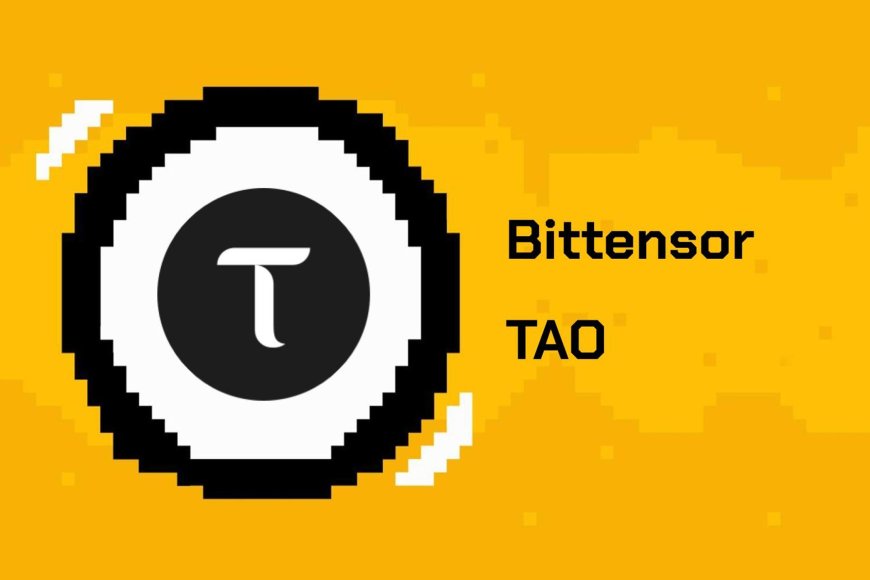The AI Revolution Meets Blockchain: Exploring Bit Tensor's Decentralized Machine Learning Network
In the rapidly evolving landscape of artificial intelligence, a new player is emerging that promises to revolutionize the way we approach AI development.

In the rapidly evolving landscape of artificial intelligence, a groundbreaking project is emerging that promises to revolutionize the way we approach AI development. Bit Tensor, a startup founded by machine learning researchers Jacob Steves and Ala Shabana, is pioneering a unique approach that combines blockchain technology with decentralized AI to create a more efficient, accessible, and potentially safer way to advance machine learning.
The Genesis of Bit Tensor
The idea for Bit Tensor was born out of the founders' experiences in the AI industry and their recognition of several key challenges facing the field. These include the inefficiency of repeatedly retraining models, the limited access to high-quality AI research for those outside major institutions, and the potential risks associated with centralizing AI development in the hands of a few large corporations.
Jacob Steves explains the fundamental concept: "We're taking the same technique of building these global markets which grew Bitcoin to this global size and applying it to the other computational problem which also has its own digital commodity - digital intelligence."
The Bit Tensor Approach
At its core, Bit Tensor is an open-source protocol that powers a decentralized, scalable neural network. The project leverages blockchain technology to create a marketplace for machine intelligence, where participants can contribute computational resources and be rewarded for their contributions.
The Bit Tensor network consists of two main types of participants:
- Miners: These are nodes in the network that perform machine learning tasks and contribute computational power. Miners run their own AI models and contribute to the network's overall intelligence.
- Validators: They ensure the integrity of the network by verifying and ranking the outputs of miners. Validators play a crucial role in determining the quality and usefulness of the contributions from miners.
The system uses a cryptocurrency called Tau to incentivize participation and govern the network. Miners are rewarded with Tau tokens based on the quality and usefulness of their contributions, as determined by the validators.
How Bit Tensor Works
Bit Tensor's approach to machine learning is inspired by the concept of mixture of experts models. Each node in the network runs its own model, and these models can communicate and learn from each other. The system uses a protocol that allows models to exchange information and improve collectively.
Ala Shabana describes the process: "What's happening is we're kind of stitching these models together using the Bit Tensor protocol. It's kind of almost a massive interconnected model over the Internet with Bit Tensor protocol acting as this mesh web between all of them."
One of the key innovations of Bit Tensor is its method for evaluating the contributions of different nodes. The system uses a technique called Fisher's information to measure how valuable each node's output is to the overall network. This allows for a fair and efficient distribution of rewards while ensuring that the network as a whole continues to improve.
The Power of Decentralized AI
Bit Tensor's decentralized approach offers several potential advantages over traditional centralized AI development:
- Scalability: By leveraging a global network of contributors, Bit Tensor has the potential to create a supercomputer that rivals or exceeds the computational power of major tech companies. The founders point out that Bitcoin's network has already demonstrated the power of decentralized computing, becoming the world's largest supercomputer.
- Efficiency: The system aims to reduce redundancy in AI research by allowing models to learn from each other, potentially accelerating progress in the field. This collaborative approach could lead to faster breakthroughs and more robust AI systems.
- Accessibility: Anyone with computational resources can contribute to and benefit from the network, democratizing AI development. This opens up opportunities for researchers and developers who may not have access to large-scale computing resources.
- Diversity: The open nature of the network allows for a wider range of approaches and perspectives, potentially leading to more robust and innovative AI solutions. This diversity could help address issues of bias in AI development.
- Alignment: By distributing ownership and control of AI systems, Bit Tensor aims to create a more symbiotic relationship between AI and humanity. This approach could help mitigate some of the risks associated with centralized control of powerful AI technologies.
Current State and Future Potential
As of early 2022, Bit Tensor's network consisted of approximately 2,048 active nodes, with a conservative estimate of over 110 billion parameters across all models in the network. This puts it on par with some of the largest language models currently in existence, such as GPT-3.
The project is still in its early stages, but it has shown promising growth since its launch in November 2021. The team is continually working on improving the system's performance, scalability, and efficiency.
Steves notes that while it's difficult to precisely measure the total computational power of the network due to its decentralized nature, they can estimate based on the token price and market dynamics. He states, "We're kind of growing up to that number into the hundreds of thousands of dollars per day of compute."

Addressing Concerns and Challenges
While the potential of Bit Tensor's approach is significant, it also raises some concerns and challenges:
- Environmental Impact: The energy consumption of a large-scale decentralized AI network could be substantial. However, Steves argues that by creating a more efficient market for AI computation, Bit Tensor could potentially reduce waste in the field. He also points out that the system could incentivize the use of renewable energy sources, similar to how Bitcoin mining has driven innovation in energy efficiency.
- Malicious Use: Decentralizing AI development could potentially make it easier for bad actors to access powerful AI capabilities. The Bit Tensor team acknowledges this risk but argues that the benefits of democratization outweigh the potential drawbacks. They believe that a diverse, decentralized network is more resilient to misuse than a centralized system.
- AI Alignment: Some AI researchers worry about the risks of advanced AI systems that are not properly aligned with human values. While Bit Tensor's approach doesn't directly solve this problem, the team believes that decentralization and tokenization could provide new tools for addressing alignment issues. Shabana suggests that by tying AI systems to a diverse group of token holders, we can create a more symbiotic relationship between AI and humanity.
- Technical Challenges: Coordinating a decentralized network of AI models presents significant technical hurdles, which the Bit Tensor team continues to work on. These include ensuring consistent performance across diverse hardware, managing network latency, and developing robust consensus mechanisms.
The Vision for the Future
Bit Tensor's founders envision a future where AI development is not dominated by a few large companies but is instead a collaborative effort involving thousands of contributors worldwide. They believe this approach could lead to more rapid advancements in AI while also ensuring that the benefits are more widely distributed.
Shabana explains, "The problem of AGI (Artificial General Intelligence) requires a lot more ingenuity, teamwork, people really generally just a lot more work than can be done by a single company. To be completely honest with you, I find it a little bit more terrifying that a single company would own AGI compared to all of us owning a piece of it."
The team is also exploring ways to expand the capabilities of the network, including the development of specialized subnetworks for different AI tasks, such as image processing or natural language understanding. This modular approach could allow for even greater flexibility and scalability in the future.
Implications for the AI Industry
Bit Tensor's approach has the potential to disrupt the current AI landscape in several ways:
- Democratizing AI Research: By providing a platform where anyone can contribute to and benefit from AI development, Bit Tensor could help level the playing field in AI research, potentially leading to more diverse and innovative solutions.
- Accelerating Progress: The collaborative nature of the network, where models can learn from each other, could potentially speed up the pace of AI advancement.
- Changing Incentive Structures: By directly rewarding useful contributions to AI development, Bit Tensor could shift incentives away from publishing papers and towards creating practical, valuable AI systems.
- Addressing Ethical Concerns: The decentralized nature of the network could help address some of the ethical concerns surrounding AI development, such as the concentration of power in the hands of a few large tech companies.
Conclusion
Bit Tensor represents a bold new approach to AI development, one that leverages the power of blockchain technology and decentralized networks to create a more open, accessible, and potentially safer path to advanced artificial intelligence. While the project is still in its early stages and faces significant challenges, its innovative approach and the caliber of talent working on it suggest that it could play a significant role in shaping the future of AI.
As the AI landscape continues to evolve at a rapid pace, projects like Bit Tensor offer an alternative vision for how we might harness the power of machine learning while mitigating some of the risks associated with centralized control of these powerful technologies. Whether this decentralized approach will ultimately prove more effective than traditional methods remains to be seen, but it undoubtedly adds an important new dimension to the ongoing conversation about the future of AI development.
For those interested in following Bit Tensor's progress or potentially contributing to the project, the team encourages visiting their website at bittensor.com, checking out their open-source code on GitHub, and joining their Discord community for discussions and updates.
As we stand on the brink of potentially transformative advances in artificial intelligence, Bit Tensor's decentralized approach offers a compelling vision for a more democratic and distributed future of AI development. While challenges remain, the project's innovative combination of blockchain technology and machine learning could help pave the way for a new era of collaborative and open AI research, potentially reshaping the landscape of artificial intelligence for years to come.
Source : @The Bittensor Hub.
















